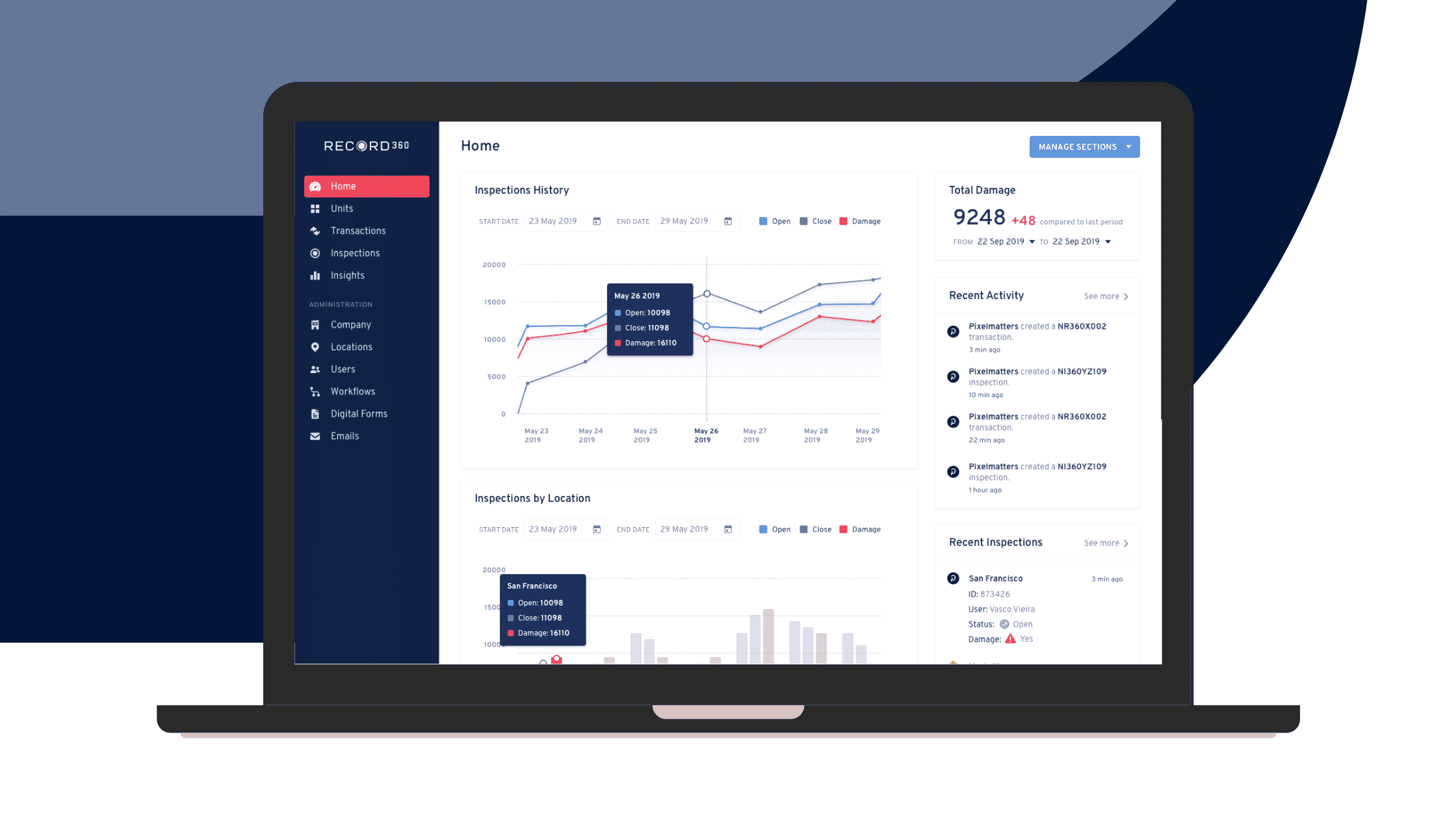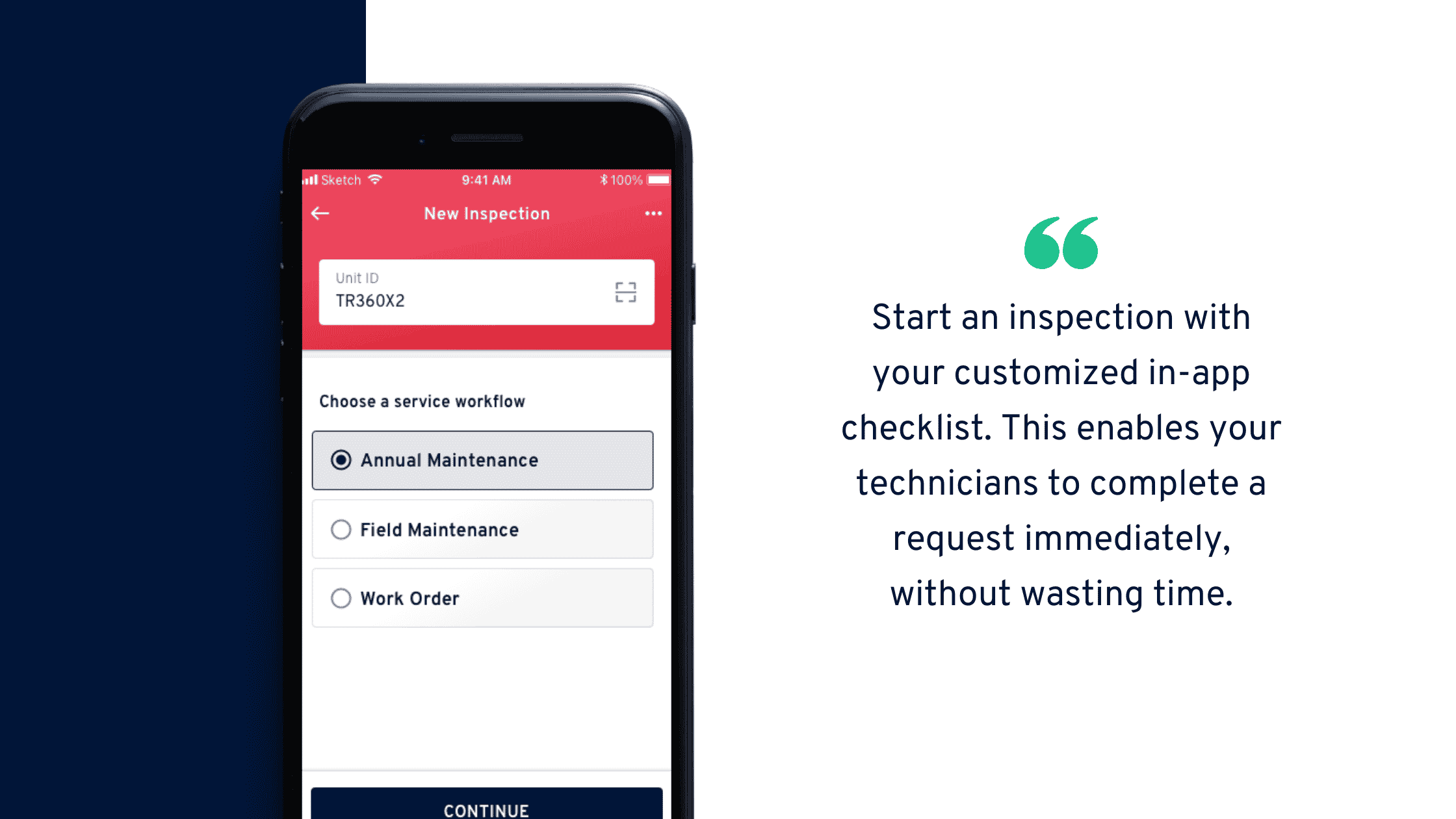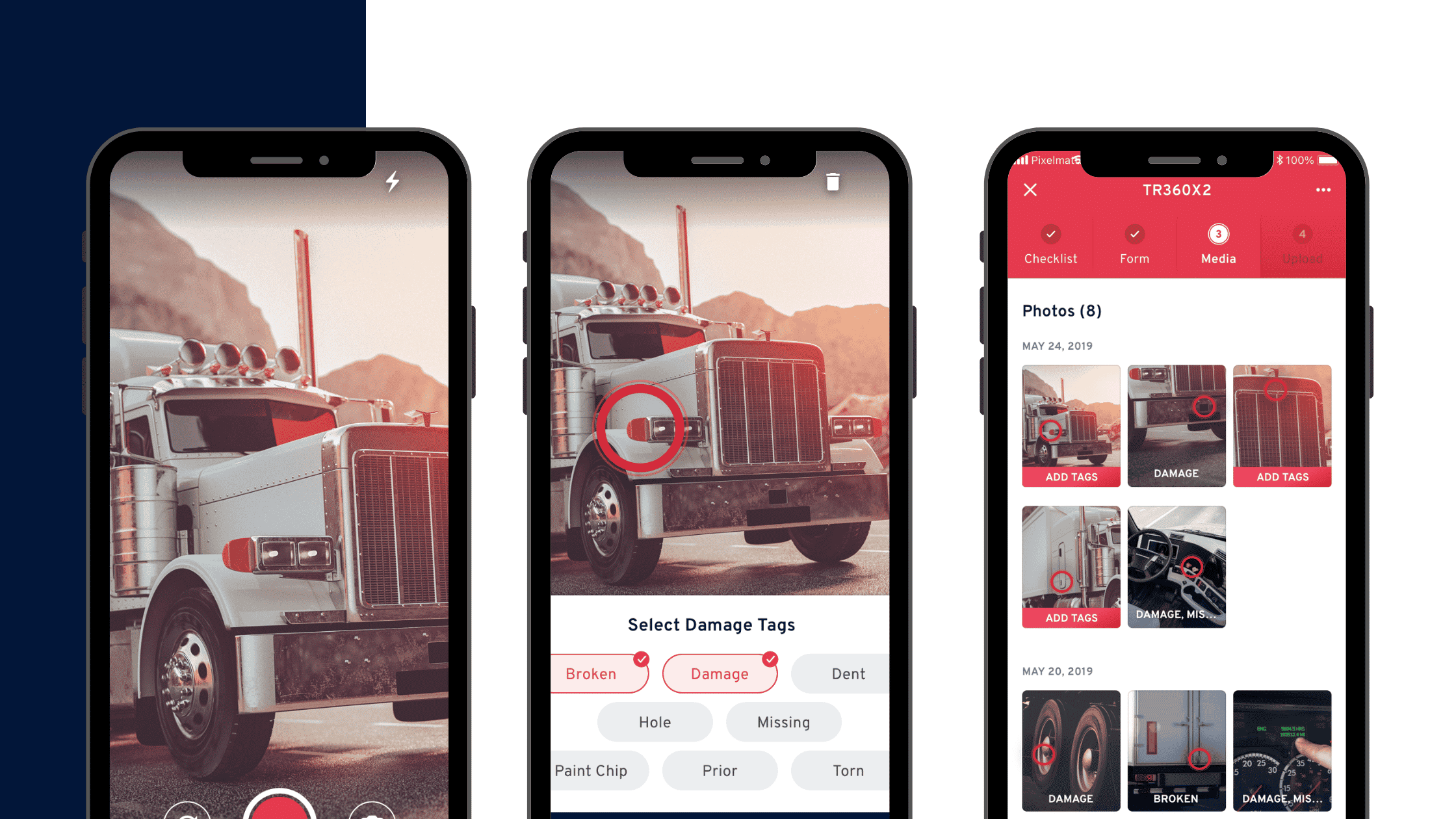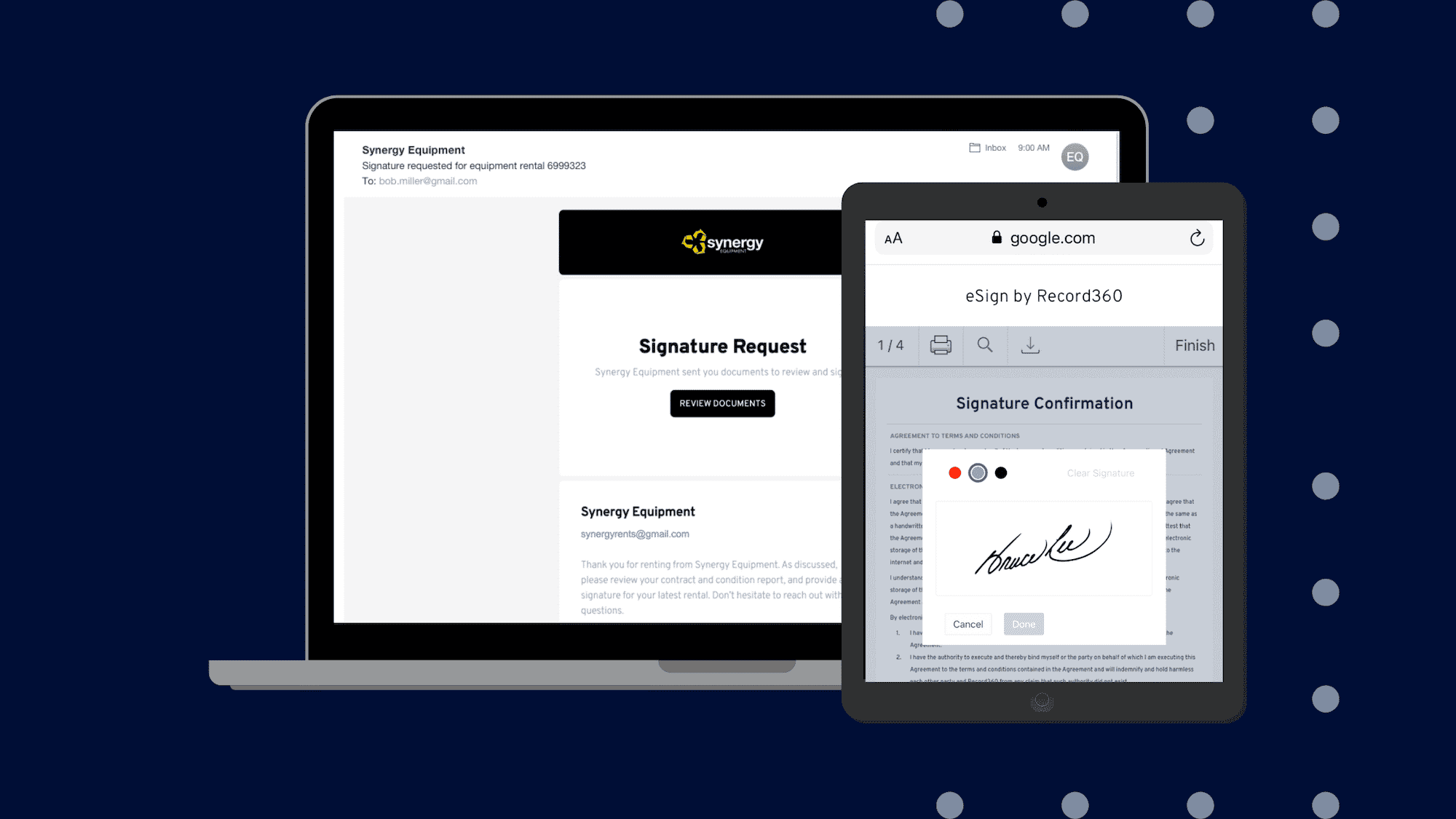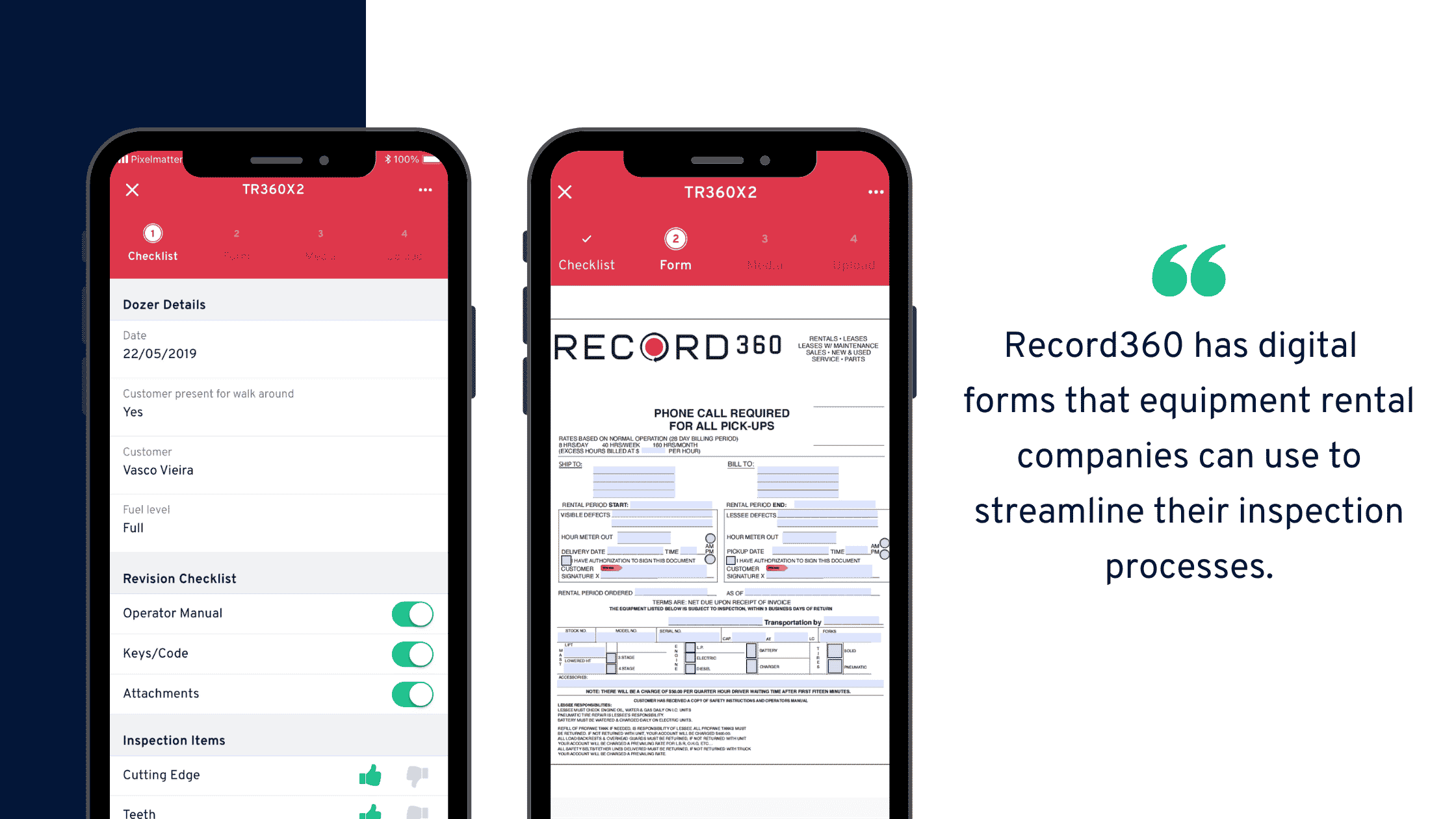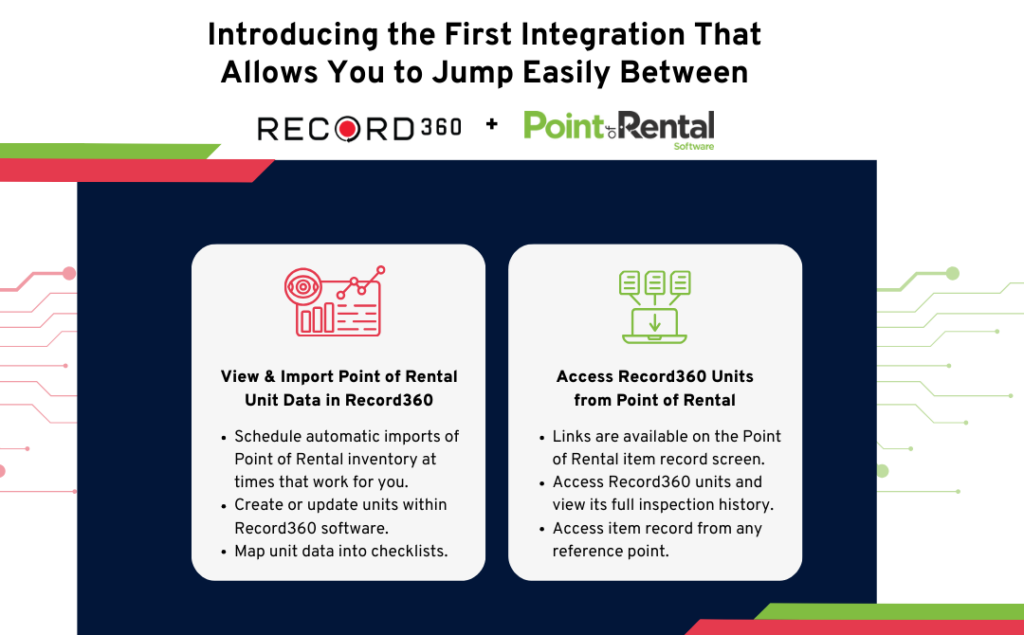Any rental company with an established truck fleet management structure will advocate for regular truck inspections.
Sticking to a consistent inspection schedule keeps your trucks in tip-top shape and gives you a better picture of your fleet’s overall condition.
Moreover, you can detect and address any minor issues before they escalate into full-blown vehicle breakdowns and irreparable damages. This allows you to operate as close to maximum efficiency as possible.
If you’re looking for tried and tested strategies to make your truck inspections seamless and efficient, continue reading the tips below.
Inspection app features for truck rental companies
You can run your truck rental business more efficiently with a truck inspection app. You can cut down on costs, increase your productivity, and even improve the work experience of your employees.
These are some of the many features a truck inspection app brings that rental companies can benefit from:
1. Centralized inspection data
A huge benefit of using a truck inspection app is centralizing your truck inspection data.
Any important information you enter into the app—such as service history, client history, and even truck lease agreement details—is neatly organized and instantly ready for review.
You’ll have access to cloud-based services that let you store and retrieve essential data when and where you need it.
This feature is handy for any rental business that doesn’t want to waste time manually inputting, requesting, and sending data across multiple branches. You can also pull a truck’s entire service history during a commercial truck inspection.
2. View your fleet’s status easily
A good truck inspection app will also have a dashboard that gives you an overview of your fleet’s real-time status.
For example, Record360 lets you access a dashboard that displays your fleet condition in real-time. This helps you manage your truck rental business since you can monitor your trucks easily.
At a glance, you can tell which trucks are available to rent under a truck lease agreement or are out of commission due to repairs, routine maintenance, or commercial truck inspections.
Access to all this information in real time allows you to make better decisions, helping you increase your utilization. What’s more, it makes your company more agile.
If it only takes seconds to determine the availability of your trucks, while it takes your competitors a couple of hours…your chances of dominating your competitors and winning new business drastically increase.
3. Perform truck inspections anywhere
Using a truck inspection app lets you perform a commercial truck inspection from anywhere and at any time.
With Record360, you can send contractors and drivers a direct link to the app, allowing them to perform a truck inspection on-premise or on-site.
You can even access remote inspection data, allowing you to find out about damage from any location.
Because your truck drivers only need their mobile devices to perform the inspections, it makes their life easier. They don’t need to bring paper checklists to conduct their inspections.
Also, losing their inspection records becomes impossible because everything is stored in the cloud.
Must Read: User-friendly Truck Inspection Apps to Streamline Your Business
4. Document the condition of your trucks
Without centralized inspection data, it’s easy to miss customer damage, especially if your customers return the truck to a different rental branch.
This leaves you no choice but to foot the expensive repair bills your customers should pay.
Using a truck inspection app gives you instant access to photos of your truck taken before the client signed the truck lease agreement. This makes finding any new damage to your truck easy and has irrefutable proof to back up your claim.
5. Obtain signatures instantly
A truck inspection app saves you time and effort by letting you capture digital signatures easily. No more waiting around for your customers or team members to sign your inspection reports.
You can sign off on important documents and authorize crucial jobs without dealing with mountains of paperwork.
Must Read: The importance of electronic signatures for equipment inspections
Because the people who are authorized to sign can enter their signature anywhere, the process of renting out your trucks is expedited.
6. Take photos and videos
Before renting out a truck, the last thing you want is to have a written narrative of its condition. After all…when your trucks are returned with an even bigger dent or damage, your written descriptions can’t save you.
For example, imagine your truck has a dent in the door. You describe the dent in a written report, then rent the truck out to your customer. When your truck comes back, the dent has tripled in size.
How can you claim compensation from your customer when you only have a written report describing the “dent”? Your customer can easily claim the dent was already there when your truck was sent to them. You can’t prove that the dent became bigger.
With written narratives, you’ll end up with unwinnable damage disputes. You’ll end up forking out thousands for repairs that your customers should be paying.
That’s why truck inspection apps must have photo and video capture features.
When you take a video of your truck before renting it out, you obtain an accurate visual of your truck’s condition. This becomes your irrefutable proof that damage was caused by your customer.
Must Read: Why equipment videos and photos are important for equipment inspections
Preparing for a commercial truck inspection
To ensure your commercial motor vehicles (CMVs) are always in the best condition, you must be proactive with your maintenance.
Your drivers must learn the hazards of driving a damaged CMV and how to detect, report, and repair minor problems before they become more significant.
A great way to do this is with a simple, walk-around inspection to check critical vehicle parts, elements, and functions before and after every trip.
1. Test the lights
Properly functioning lights are crucial to help truck drivers see the road clearly and avoid any accidents. Turn on the engine and switch each light on systematically.
Check the headlights, taillights, brake lights, high and low beams, turn signals, and any other important lights to ensure they all function properly.
2. Check the tires
Assess each tire for wear and tear. Look out for loose tires or any form of damage. Use a tire pressure gauge to ensure the air pressure is at recommended levels.
Though tires rarely blow out, worn and under-inflated tires can make a truck challenging to control. In worst-case scenarios, the truck may even become undrivable.
Be familiar with the rules and regulations concerning mudflaps in any of the states along your route. Some states provide specific requirements for mud flaps or splash guards to keep spray or debris from hitting the windshields of any vehicles following your truck.
It’s also worth pointing out that driving trucks with under-inflated tires can consume more fuel. So if you’re seeing an unreasonable increase in your fuel consumption, be sure to check your tires.
3. Look for cracks
Regularly check for hairline cracks and “stars” potentially caused by flying gravel or other debris. Any cracks on windows or windshields can worsen quickly if they aren’t addressed immediately.
4. Check your breaks
Inspect your air brake system to ensure you have no air leaks or air pressure loss.
5. Inspect your wipers
Make sure your blades aren’t missing or broken. When used, your wipers should give your drivers a clear vision. Damages or cracks can prevent this.
6. Check your truck’s security features
Examine your truck’s security features to make sure they’re functioning correctly. Check your seatbelts, doors, wiring, breaks, etc.
Must Read: Mastering DOT Annual Inspections: A Comprehensive Guide to Navigating the Checklist and Form
Tips for more accessible and more efficient truck fleet management
Consider the tips below to help make your truck fleet management less stressful and more efficient.
1. Switch to using a digital truck inspection form
Instead of manually filling out paper-based truck inspection forms and digging through records, your team members can easily pull up any digital forms with a mobile device linked to the truck inspection app.
By using digital truck inspection forms, your team members can easily access relevant documentation when necessary.
2. Stay up-to-date with the condition of your fleet
Knowing your fleet’s condition is important to ensure you run your rental business at maximum efficiency.
Staying updated with information such as which units are due for routine maintenance, out for repairs, or scheduled for truck inspection helps you create a more efficient working schedule for your drivers.
3. Keep everyone in the loop
Having quick access to critical information reduces the chances of errors due to miscommunication. That’s why keeping your team in the loop is a great way to keep your rental business running smoothly.
A dependable truck inspection app that lets you centralize your data allows seamless access to and sharing for your team members.
4. Invest in training your drivers
Drivers with poor driving habits can cause problems for your truck rental company. Your trucks will have a shorter service life, and your truck repairs and maintenance costs can skyrocket.
When you factor in the accidents and potential legal problems your delinquent drivers can cause, it becomes apparent why you must invest in training.
If your drivers avoid hard braking and making sharp turns, among other poor driving habits, you can get more mileage from your trucks since their service life is prolonged.
5. Put a premium on hiring the right people
Whether you’re hiring a driver, accountant, or rental manager, you need to be cautious about who you hire.
Take the time to do ample background checks and to dig in during interviews.
You can have the best processes and policies in place to run your truck rental company, but if you hire people with character issues, you’ll have many problems.
Truck inspection guide: Key takeaways
Following a regular truck inspection schedule is a great way to keep your fleet in good condition and your rental business running as efficiently as possible.
With a regular truck inspection schedule, you can detect and address minor issues before they escalate into bigger, more costly problems.
While it’s easy to keep track of a small fleet’s schedule, things quickly become more complicated the larger your fleet gets.
To address truck fleet management’s common issues and hiccups, integrate a truck inspection app into your operations to streamline your workflows.
Schedule a demonstration today to learn how Record360 can optimize your truck rental company.
